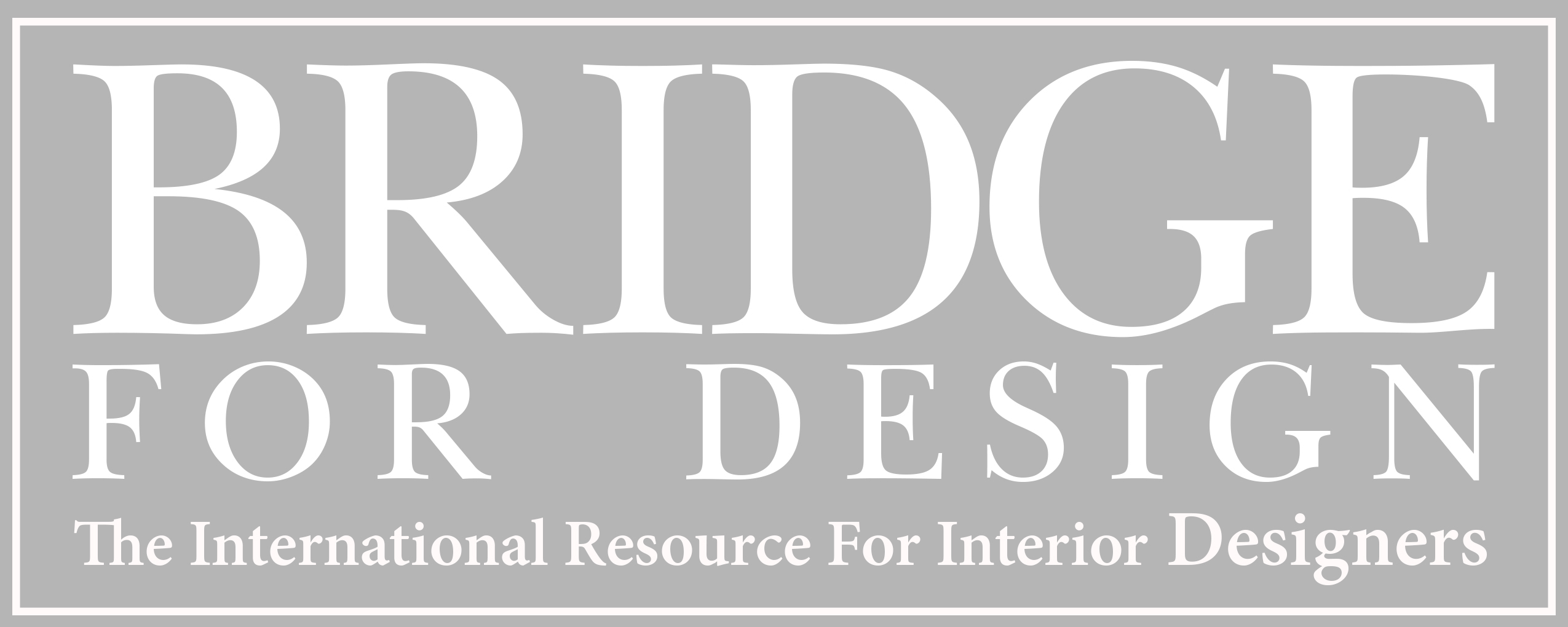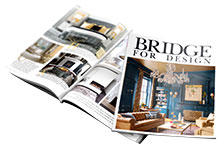A good bed is the anchor piece of any bedroom – from the master suite to a child’s room or a guest room. Beds play a central role in our lives and designers need to be responsive to this. Whether a project is domestic or commercial, the right choice combines three considerations; comfort, good looks and the correct emotional signals. These can range from pure romance and escapism to, at the other end of the scale, no-frills masculinity.
Looking back in time, beds have always been key feature points –their importance signalled by the fact that they were by no means always designed for sleeping. Ornate state apartments with their magnificent suites of furniture were where rulers held court. Their actual sleeping space was often a more private apartment, where the bed itself was relatively small.
It is often said that antique beds, especially French ones, are small because their occupants were shorter people. In fact, their shorter dimensions are usually because occupants slept propped up on pillows and bolsters rather than lying at full stretch as we do today. They were also narrower, because the more elevated you were in society, the more likely you were to sleep alone once the hurly burly of the day was done.
Today, we want beds to be both a cocooning retreat and a clear statement about our personality. We also place immense value on quality of sleep, which makes the choice of mattress system just as crucial as the frame or divan. For both reasons, the size of beds has changed appreciably in recent years with Kingsize becoming the default double and Emperor an increasingly usual specification.
The rule of thumb for bed size is to choose the biggest size the room will allow, ideally leaving space for reasonably sized bedside tables on both sides. Not only do bigger beds look more luxurious, they also offer a better night’s sleep. At the very least, the dimensions should give a minimum of 90 cm mattress width per person and 15 cm longer length than the tallest. This allows restful sleep, undisturbed by partners’ body movements or temperature.
With countless different types of mattress on the market, the ultimate remains a handmade pocket sprung construction. Buy from a quality name offering good advice and a good guarantee. Ideally too, steer clients towards mattresses with natural fillings such as horsehair, wool and cotton, which regulate body temperature at night far better than manmade materials. Don’t forget that the divan is the foundation for the mattress. They work together, so for the ultimate in comfort, specify a sprung base rather than a rigid box or slats.
Style-wise, there are some iconic beds which transcend fashion and stay always on trend, especially with the option of modern finishes, from mirror glass to metallics. These icons range from four posters (the epitome of romance) to the period French styles, especially those of the Rococo and Empire, first reintroduced to the UK by Simon Horn in the 1980’s.
People have enduring affection for the sleigh bed (lit bateau) and this look in particular has been resized and reworked into countless offshoot styles, accommodating the needs of modern bedrooms whilst still remaining a recognisable decorative theme. You’ll find sleigh beds in wood, in fabric, caned or upholstered in buttoned leather, with headboards and footboards high, low and every height in between. Suggesting solidity and exceptional comfort, it’s a fruitful seam to explore for both feminine and masculine interiors and a classic for children’s bedrooms too. A single Lit Bateau, especially if it converts to a sofa bed, also makes a great occasional sleeping space or daybed.
Today’s confident fusions of classic and contemporary style are also bringing even more elaborate and splendid period beds back into focus. Carved, caned and painted or gilded styles of the 18th and 19th Centuries can comfortably hold centre stage in otherwise modern interiors, with bespoke finishing and an emphasis on luxury uniting the two elements.
If a project calls for luxury with an altogether modern feel, divans paired to custom-upholstered headboards give an equally sumptuous look. The key to getting it right is to supersize headboards– in some projects we’ve been asked to make them up to 2 metres tall, so that they virtually become wall cladding. Bespoke-made and upholstered in your choice of fabric, with design detailing such as piping, buttoning or studding, headboards can be matched to custom upholstered divans for the seamlessly smart finish which all of today’s bedrooms demand.


.jpg)
.jpg)
.jpg)


